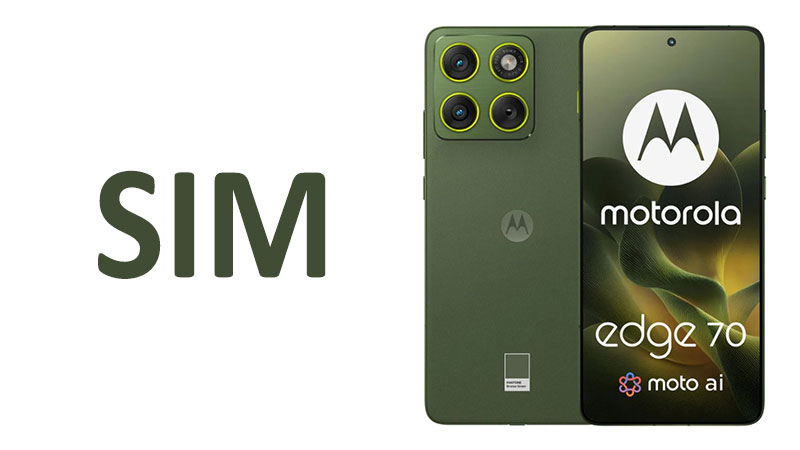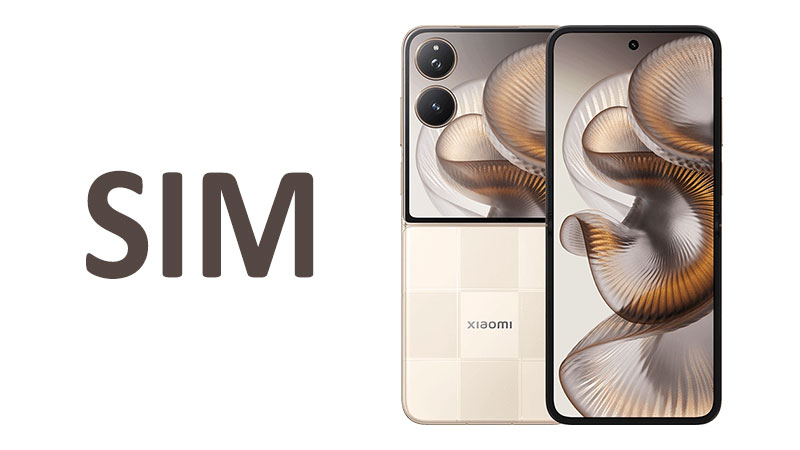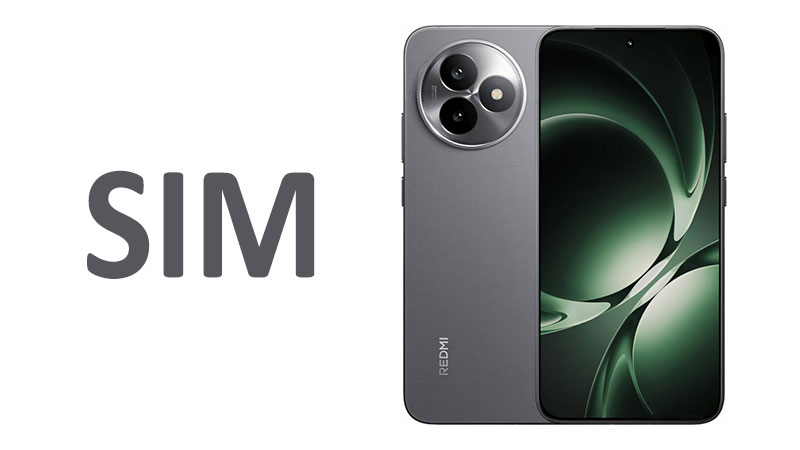The Motorola Edge 70 SIM setup is a crucial factor for modern mobile users. This premium device, announced in late 2025, promises significant connectivity advancements. Understanding its versatility is essential for buyers. The Edge 70 offers a complex yet flexible hybrid dual-SIM configuration. It fully supports both the traditional physical Nano-SIM and the modern electronic SIM, or eSIM. This comprehensive review explores every facet of the Motorola Edge 70’s cellular and wireless technology. It will help users determine if this flagship phone meets their demanding connectivity needs.
The Foundation of Flexibility: Motorola Edge 70 SIM Configuration
Mobile connectivity is a critical requirement for daily life. Users now demand flexibility and efficiency from their smartphones. The Motorola Edge 70 addresses this need successfully. It features a highly versatile SIM configuration across different regions. This approach maximizes user choice and carrier compatibility worldwide.
Understanding the Regional SIM Differences
The Edge 70 is primarily released in two distinct SIM variants. These configurations cater to specific market needs. Buyers must check their regional model before purchase.
The International Version employs a hybrid dual-SIM standard. This setup combines one physical Nano-SIM slot with one integrated eSIM. This is the more modern and flexible option. It offers the best balance of physical familiarity and digital convenience.
The China Version, in contrast, uses a pure physical dual-SIM system. It provides two slots for two separate Nano-SIM cards. This model avoids the reliance on eSIM technology. eSIM adoption is less common in certain markets, including China.
Specialized Comparison: Hybrid vs. Dual Physical SIM
Both configurations allow users to manage two separate cellular connections simultaneously. The hybrid Nano-SIM plus eSIM setup is generally preferred. This is because the eSIM is permanently built-in. It leaves the physical slot open for a secondary line or travel SIM.
Conversely, the dual Nano-SIM model offers direct, simple physical swapping. This can be easier for users who frequently switch between many physical cards. However, it lacks the digital flexibility of storing multiple eSIM profiles. The Edge 70’s dual-SIM capability is a key selling point. It makes the device highly attractive to global travelers and business professionals.
Pros and Cons of the Hybrid Dual-SIM Setup (International Model)
The Nano-SIM and eSIM combination brings compelling advantages. However, users should understand the minor drawbacks as well.
Hybrid SIM Pros
The setup is exceptionally versatile. It allows for quick digital activation of a second line. This is possible without needing to visit a physical store. The eSIM also frees up valuable internal space. This space can then be used for other components. Travelers can easily buy a local data plan. They keep their home number active on the physical SIM simultaneously. This configuration reduces international roaming charges significantly.
Hybrid SIM Cons
Not all carriers worldwide fully support eSIM activation yet. This is a crucial point for users outside major metropolitan areas. Transferring an eSIM profile to a new device is slightly more complex. It often requires contacting the carrier for a re-provisioning QR code. This process can sometimes involve a delay or a small service fee. New buyers must confirm carrier compatibility first.
Important Points for the Buyer: Regional Variations
Buyers must exercise diligence when purchasing the Motorola Edge 70. SIM configurations sometimes vary by geographical region. For instance, the dual Nano-SIM model might be necessary for users in mainland China. Ensure the purchased model matches the desired dual-SIM setup. Buying an unlocked international version offers maximum flexibility. This version includes the highly desired eSIM capability.
eSIM: The Digital Revolution in Motorola Edge 70
The inclusion of eSIM support is arguably the most significant connectivity feature. The embedded SIM eliminates the need for a physical, removable plastic card. A tiny chip is permanently soldered into the phone’s main board instead. Users can download and activate carrier profiles digitally.
How eSIM Works on the Edge 70
Setting up a new line or switching carriers happens almost instantly. The process is often completed through a simple QR code scan. Alternatively, it can be done via a carrier’s dedicated app. This digital simplicity marks a major improvement. It is far better than waiting for a physical SIM card to arrive by mail. The Edge 70 allows the device to store multiple eSIM profiles. Often, it can store up to eight or more profiles. Users can only keep two lines active at any given time. However, they can quickly switch between stored digital profiles. This is a massive benefit for international travel management.
Specialized Comparison: eSIM vs. Physical SIM
The traditional physical Nano-SIM slot offers familiarity and ease of transfer. You simply move the plastic card to a new device. However, the eSIM holds several distinct advantages that enhance the Edge 70 experience.
First, the eSIM is significantly more secure. It cannot be physically removed if the phone is lost or stolen. The digital profile is much harder to tamper with or clone. Second, the absence of a large SIM tray simplifies the device design. It can improve the phone’s water and dust resistance rating. Motorola has historically embraced eSIM adoption in its high-end Edge series. They continue this commitment with the Edge 70.
The Role of Dual-SIM Dual Standby (DSDS)
The Edge 70 employs Dual SIM Dual Standby (DSDS) technology. This is the common approach used by most manufacturers. DSDS means both SIM lines remain active and ready. They are ready to receive calls or messages simultaneously.
The phone utilizes a single set of radio components efficiently. When you actively use one line for a voice call, the other line temporarily becomes inactive. That secondary line will appear unreachable to callers. The phone prioritizes the active call or data session on one line. This approach conserves battery life effectively.
Specialized Comparison: DSDS vs. Flagship Competitors
Motorola’s approach is similar to many premium smartphones. The Edge 70 maintains a competitive hybrid setup. This contrasts with models that have transitioned entirely to eSIM. For instance, certain major markets saw the Apple iPhone move to an eSIM-only model. The Edge 70, by retaining the Nano-SIM slot, provides a transition point. It caters to users who need the physical slot for legacy carriers. This choice makes the Edge 70 a more attractive option in emerging markets.
Buyer Point: Managing DSDS Limitations
Users must be aware of the DSDS limitation. If a call is ongoing on SIM 1, a call incoming to SIM 2 will likely go to voicemail. This is a standard characteristic of the technology. The phone’s software manages calls, texts, and data preferences seamlessly. Users can dedicate one SIM as the default for mobile data. They can specify which SIM the phone uses for outgoing calls to specific contacts. Both network signals display on the status bar simultaneously.
High-Speed Cellular Network Performance: 5G and LTE
The Motorola Edge 70 is positioned as a high-end device. It therefore boasts advanced cellular connectivity features. The phone fully supports multiple network generations. These include GSM, HSPA, LTE, and modern 5G technologies.
The Power of 5G Connectivity
The inclusion of 5G capability is paramount for a 2025 flagship. 5G provides significantly faster download and upload speeds. It offers much lower latency compared to 4G LTE. The Edge 70’s comprehensive modem ensures it captures the fastest available speeds. This is true in any environment where 5G coverage is present.
Sub-6 GHz 5G technology provides wider coverage. It also offers better wall penetration in buildings. This technology offers substantial speed increases over 4G LTE networks. The phone is engineered to switch efficiently between 4G and 5G. It only uses the high-power 5G when the user is actively demanding high data rates. This intelligent optimization helps mitigate the battery drain associated with high-speed connections.
Carrier Aggregation for Enhanced Performance
Carrier aggregation is a key feature in the Edge 70’s modem. This technology allows the phone to combine multiple bands of spectrum simultaneously. This process results in faster data throughput. It also increases overall network capacity. For the user, this means less buffering when streaming high-resolution video. It also ensures quicker downloads of large files and smoother real-time gaming.
The phone’s modem supports an extensive array of carrier aggregation combinations. This results in superior data throughput in congested 5G areas. This is a substantial performance boost over older 4G-only devices.
Specialized Comparison: Edge 70 vs. Edge 60 Series
The Edge 60 series, a predecessor, often maxed out at 4G LTE Advanced capabilities. The move to comprehensive 5G support in the Edge 70 provides a generational leap in mobile data performance. The 5G modem in the Edge 70 is also likely more power-efficient. It manages connections more intelligently than older components. While the Edge 60 series offered reliable performance, the Edge 70 delivers superior speed and future-proofing. This makes the Edge 70 a better long-term investment for data-heavy users.
Buyer Point: Checking Carrier Bands
Not all 5G networks are created equal. Prospective buyers must check if the Edge 70 model supports the specific 5G and LTE bands used by their primary carrier. Compatibility ensures the best possible speeds and widest coverage. A highly compatible phone like the Edge 70 should work across most major global networks. However, regional variations in modem tuning still exist.
Robust Wireless Connectivity: Wi-Fi 6, Bluetooth 5.4, and NFC
Beyond cellular connectivity, the Motorola Edge 70 features the latest wireless standards. These features are crucial for a complete mobile experience. The phone excels in both local network speed and peripheral management.
The Efficiency of Wi-Fi 6
The Motorola Edge 70 supports Wi-Fi 6, also known as IEEE 802.11ax. This feature represents a massive leap forward from the older Wi-Fi 5 standard. Wi-Fi 6 is crucial for home and office environments. It ensures superior local network speed and stability.
Wi-Fi 6 delivers higher theoretical peak speeds than Wi-Fi 5 (802.11ac). More importantly, it uses advanced technologies to manage congestion. The Edge 70 integrates this technology to offer superior local network performance in crowded areas. This means faster data transfer when multiple devices share the same network.
The Edge 70 utilizes a dual-band system. This means it connects to both the 2.4 GHz and 5 GHz frequency bands. The 5 GHz band offers faster speeds and more capacity. The 2.4 GHz band provides better coverage over longer distances. The phone intelligently switches between them for the optimal balance. This intelligent management ensures rock-solid stability for streaming and browsing.
Specialized Comparison: Wi-Fi 6 vs. Older Wi-Fi 5
The predecessor Edge models, such as the Edge 50 series, relied heavily on Wi-Fi 5. Moving to Wi-Fi 6 in the Edge 70 provides several key advantages. Wi-Fi 6 introduces OFDMA (Orthogonal Frequency-Division Multiple Access). OFDMA allows simultaneous data transmission to and from multiple devices. This drastically improves network efficiency in busy households or offices. Furthermore, Wi-Fi 6 includes Target Wake Time (TWT). TWT helps the Edge 70 reduce battery consumption. It does this by scheduling when the phone wakes up to receive data. This is a significant quality-of-life improvement.
The Latest in Bluetooth: Version 5.4
The Edge 70 includes the latest Bluetooth standard, version 5.4. Bluetooth 5.4 offers several key enhancements. It supports Low Energy (LE) Audio. LE Audio provides higher quality audio streaming than previous standards. This is achieved with significantly lower power consumption. It also improves connection stability for wireless earbuds and smartwatches. The efficient design ensures reliable pairing and minimal battery drain on connected peripherals. This makes the Edge 70 an excellent choice for music lovers and wearable users.
NFC, USB, and Radio Considerations
Near Field Communication (NFC) is fully supported on the Edge 70. This enables contactless payments via services like Google Pay. It also allows for quick pairing with other NFC-enabled devices. This is a standard and essential feature for modern convenience.
The phone uses a USB Type-C 2.0 port. This port supports On-The-Go (OTG) functionality. OTG allows the phone to connect to external devices like flash drives or keyboards. However, the USB 2.0 standard is a point of concern for some buyers. It offers slower data transfer speeds than the newer USB 3.0 or Thunderbolt standards. This is a key detail for users who frequently transfer massive video files to and from the phone. The device does not include an FM Radio tuner.
Advanced Location and Navigation Features
Precise location services are a foundational requirement for any 2025 premium device. The Motorola Edge 70 includes an advanced Global Navigation Satellite System (GNSS) receiver. This ensures highly accurate and reliable positioning.
Multi-System Global Support
The phone features support for multiple satellite systems. This includes GPS (USA), GALILEO (Europe), GLONASS (Russia), BDS (China), and QZSS (Japan). Using multiple systems simultaneously significantly improves positional accuracy. It enhances the reliability of location services, especially in difficult environments. For instance, dense foliage or tall urban buildings can often interfere with location signals. The Edge 70’s multi-system support helps reduce these errors. This feature proves invaluable for detailed navigation, fitness tracking, and location-based augmented reality applications.
Pros and Cons of Robust GNSS
GNSS Pros
Multi-system support guarantees faster Time-to-First-Fix (TTFF). This is the time it takes to initially acquire the satellite signal. It also results in much more stable tracking in complex environments. This accuracy is essential for ride-sharing apps and detailed running maps.
GNSS Cons
While highly beneficial, the continuous use of multiple satellite constellations can slightly increase power consumption. The advanced GNSS chip is always working to triangulate a precise position. This is generally a worthwhile trade-off for the improved reliability offered.
Connectivity and Data Security
The connectivity design of the Edge 70 also inherently enhances security and privacy. Data security is paramount in a dual-SIM environment.
eSIM Security Advantages
An eSIM cannot be swapped out easily or physically removed. This makes device theft less appealing for those looking to quickly misuse the cellular line. The digital profile is securely stored on the phone’s soldered chip. This makes it far more difficult to tamper with or clone.
Dual-SIM Data Separation
The phone’s operating system expertly manages dual-SIM security. It ensures that data remains strictly separated between the work and personal lines. Users can confidently use two separate identities on the same physical device. This level of separation is mandatory for adherence to corporate security policies. The advanced Wi-Fi 6 protocols also include the latest WPA3 encryption standards. These standards protect data transmitted over local wireless networks. Motorola’s commitment to robust security makes the Edge 70 a reliable choice for privacy-conscious users.
Essential Buyer Considerations
Before purchasing the Motorola Edge 70, prospective buyers must consider several important factors. These points often determine the quality and seamlessness of the user experience.
Carrier Locking and Unlocking Policies
If you purchase the Edge 70 directly from a mobile operator, the device might be locked to that specific network. This restriction prevents you from using the second SIM slot or the eSIM with a different carrier. Ensure you understand the carrier’s unlocking policy beforehand. Buying an unlocked version from a reputable retailer offers maximum flexibility for dual-SIM use.
The Wi-Fi 6 Ecosystem
While the Edge 70 supports Wi-Fi 6, users still need a compatible Wi-Fi 6 router. Only a matching router will allow access to the full potential of the technology. The phone is fully backward compatible with older standards like Wi-Fi 5 and Wi-Fi 4. However, if you want the improved efficiency and speed, a network hardware upgrade might be necessary. This cost should be considered when evaluating the total value proposition.
Traveler Benefits: Seamless Global Switching
The hybrid Nano-SIM plus eSIM configuration is perfect for frequent travelers. They can keep their home country’s physical SIM active for essential security texts. They can then use the eSIM slot to download a local data plan in a destination country. This arrangement is convenient and avoids expensive roaming fees entirely. Switching between stored eSIM profiles is simple, fast, and does not involve handling tiny, easily lost physical cards. The Edge 70 is designed for a truly global user.
Conclusion: Making an Informed Connectivity Choice
The Motorola Edge 70 delivers a complete and advanced connectivity package. It is perfectly suitable for a 2025 flagship device. Its versatile SIM configuration, combining Nano-SIM and eSIM, offers unparalleled flexibility. This feature serves both travelers and professionals efficiently. Users gain the immense convenience of digital activation. They retain the essential option of a physical SIM card.
The inclusion of high-speed 5G, supported by extensive carrier aggregation, ensures superior mobile data performance. Meanwhile, the adoption of modern Wi-Fi 6 technology guarantees faster, more efficient, and more stable local network connections. If you seek a smartphone that fully supports the latest digital SIM trend, requires world-class wireless speeds, and provides seamless dual-line management, the Motorola Edge 70 is an excellent choice. This phone future-proofs your connection capabilities. It excels across both cellular and Wi-Fi domains.
Frequently Asked Questions
1. Is the Motorola Edge 70 an eSIM-only phone?
No, the Motorola Edge 70 is not an eSIM-only phone. The international model is a hybrid dual-SIM device. It supports both one physical Nano-SIM card and one digital eSIM profile.
2. Can I use two different phone numbers at the same time on the Edge 70?
Yes, the Motorola Edge 70 supports Dual SIM Dual Standby (DSDS). This means you can use two different phone numbers simultaneously for calls and texts on the device.
3. Does the Edge 70 support the very latest Wi-Fi 7 technology?
No, the Motorola Edge 70 supports the highly efficient Wi-Fi 6 (802.11ax) standard. Wi-Fi 6 offers excellent speed, capacity, and efficiency compared to previous generations.
4. What is the benefit of the phone having Bluetooth 5.4?
The main benefit is support for Bluetooth Low Energy (LE) Audio. This feature enables higher quality audio streaming to earbuds and headphones. It also significantly reduces the power consumption.
5. How do the International and China SIM models differ?
The International model uses a hybrid Nano-SIM plus eSIM setup. The China model uses two physical Nano-SIM slots. Both models allow for two active phone lines.



